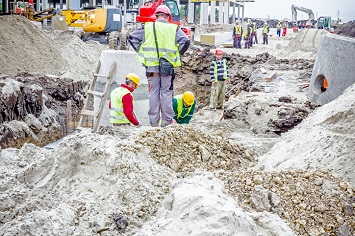In response to a spike in worker fatalities and injuries, OSHA has updated its National Emphasis Program (NEP) on Trenching and Excavation. The updated NEP supersedes a special emphasis instruction on trenching and excavation OSHA issued in 1985 (CPL 02-00-069). NEPs are mainly directed at states with approved state plans and OSHA regional and area offices. Compliance and Safety and Health Officers (CSHOs) from these offices conduct the bulk of enforcement of OSHA’s standards, including the excavation standard at 29 CFR 1926.651.

Increased Enforcement Warranted
According to the NEP directive, there were 130 fatalities recorded in trenching and excavation operations between 2011 and 2016. The private construction industry accounted for 80 percent, or 104, of those fatalities.
“An alarming 49 percent of those construction fatalities occurred between 2015 and 2016,” says OSHA.
“Because of the continuing incidence of trench/excavation collapses and accompanying loss of life, the agency has determined that these worksites continue to warrant an increased enforcement presence,” OSHA continues. “OSHA has long maintained that employees exposed to potential cave-ins must be protected before the excavation face is in imminent danger of collapse, because OSHA believes that there is a potential for a collapse in virtually all excavations.”
Outreach First
The directive states that for 90 days following the October 1, 2018, release of the revised NEP, all offices are to conduct outreach to assist employers in complying with the excavation standard and other standards applicable to trenching and excavation. Following the 90-day period, inspections and enforcement under the revised NEP are to commence. However, enforcement under CPL 02-00-069 will continue during the preenforcement outreach period.
OSHA says that CSHOs must initiate inspections whenever they observe an open trench or an open excavation, regardless of whether or not a violation is readily observed. These observations may occur during the course of a CSHO’s normal workday travel or while engaged in programmed or unprogrammed inspections. Trenching and excavation operations will also be assigned for inspection as the result of incidents, referrals, and complaints. In addition, a CSHO may expand the scope of an inspection if other safety and health hazards or violations are observed in plain view and/or brought to their attention.
Basic Requirements
OSHA’s standards require that trenches and protective systems get inspected daily and as conditions change by a competent person before work begins. In a new Quick Card accompanying the revised NEP, the following points are made:
- Never enter a trench unless:
- It has been properly inspected by a competent person.
- Cave-in protection measures are in place.
- There is a safe way to enter and exit.
- Equipment and materials are away from the edge.
- It is free of standing water and atmospheric hazards.
- Prevent trench collapses:
- Trenches 5 feet (ft) deep or greater require a protective system.
- Trenches 20 ft deep or greater require a protective system designed by a registered professional engineer.
- Protective systems for trenches:
- Slope or bench trench walls by cutting back the trench wall at an angle inclined away from the excavation.
- Shore trench walls by installing aluminum hydraulic or other types of supports to prevent soil movement.
- Shield trench walls by using trench boxes or other types of supports to prevent soil cave-ins.
OSHA’s 2015 publication, Trenching and Excavation Safety, provides detailed information on how to pass an inspection.
